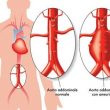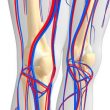This analysis of data from an already published study, “Bypass Versus Angioplasty in Severe Ischemia of the Limb (BASIL-1),” confirms the superiority of bypass over balloon angioplasty, with or without stenting, in patients with chronic lower limb ischemia who require a femoropopliteal intervention. While analyzed interventions took place between 1999 and 2003 (a fact subject...
Amount of Baseline Ischemia in Patients with Multivessel Disease and Long-Term Progress
According to this recent analysis of the MASS II trial, which will soon be published in JAMA, baseline ischemia is not associated with events at 10 years in patients with chronic stable angina. The ischemic burden induced through exercise does not predict events or long-term ventricular function. Such data add some suspense to the results...
Asymptomatic Coronary Artery Disease, Silent Ischemia: A Cardiologist’s Headache
We need more evidence to guide us in the management of silent ischemia. Confirmed asymptomatic coronary artery disease is a problem for cardiologists, who lack enough evidence to guide a risk-benefit assessment that justifies revascularization. Revascularizing the outcome of a functional assessment may reduce the rates of death and infarction, or it may just be...
Surprises in the Physiopathology of Critical Ischemia
Luminal thrombotic occlusions associated with non-significant atherosclerosis are commonly observed in patients with critical lower limb ischemia, which suggests the possibility of thromboembolic disease as a great contributor to ischemia. This was particularly verifiable in infrapopliteal vessels, thus showing a possible mechanism of progression from peripheral vascular disease to critical ischemia, as well as a...
Frailty: What Happens When We Are Too Late in Critical Lower Limb Ischemia
This condition, now “trending” among patients undergoing transcatheter aortic valve replacement (TAVR), has expanded to almost all patients we treat, always with the same outcome: the prognosis is bad, so bad that it might warrant making the difficult decision of not going forward. The association between frailty and bad prognosis is easy to see and...
Frailty and Critical Limb ischemia: Facing a New Challenge
Courtesy of Dr. Carlos Fava. Critical limb ischemia is the final stage of peripheral vascular disease and is associated to pain at rest, trophic lesions, and gangrene. It is also associated to amputation and reduced mobility. When it happens in frail patients, it presents a challenge. This population is on the rise and there is...
EuroPCR 2018 | ORBITA: The Link Between Ischemia and Symptoms Is Still Not Entirely Understood
Invasive physiology tests used in the ORBITA trial could not predict which patients would benefit from angioplasty more than placebo (sham procedure) in terms of the trial’s primary endpoint, improvement in exercise time. These data were presented at EuroPCR 2018 and published simultaneously in Circulation. Results encourage debate over the importance of ischemia reduction with angioplasty...
Risk of Colonic Ischemia after Abdominal Aortic Aneurysm Repair
This is the largest and most recent analyzis to show colonic ischemia is more frequent after open abdominal aortic aneurysm repair (2.1% a 3.6%), compared against endovascular repair (0.5% a 1%), especially in elective patients. Most cases presented within the first 7 days. The evidence is not enough to determine the cause behind the different...
What Is the Prognosis for Reinterventions in Critical Lower Limb Ischemia?
Infrapopliteal (below the knee, BTK) percutaneous transluminal angioplasty (PTA) has been acknowledged as a useful strategy in chronic critical limb ischemia (CLI), but artery calcification severity results in considerable restenosis. Repeat PTA and the management of trophic lesions help with wound healing. However, this conduct has not been extensively assessed. This study enrolled 152 patients (175 limbs)...
Lesion Targeting Seems to Be the Secret in Critical Ischemia
Ulcers that do not heal, thus threatening the integrity of a lower limb in patients with critical ischemia, is a main concern. Sometimes, despite successful revascularization, major amputation cannot be prevented. The anatomical description of angiosomes started in the 70s as a way of optimizing tissue grafts. Angiosomes are basically blocks of tissue that include...









